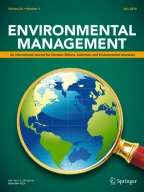Abstract
A support tool system comprising risk and priority analyses was illustrated in a geographical information system environment and also tested with data from two forest protection areas for comparison of the system output. The system is recommended as a management monitoring tool for areas where village forest protection at a local level is taking place. The geographical area in the eastern part of India is subject to scarcity of forest resources and is representative in the context of widespread occurrence of local forest protection. Data used were topography, hectares protected, population census, distance to forest and other villages, degree of forest regeneration, presence of plantations, age of protection, surrounding forest resources, and population mix. Methods used were digitizing information for the systems' different layers, analyses of satellite information, field work, gathering of local information, and the application of five risk/priority analyses: erosion, ecological and institutional sustainability, conflict, and degree of dependency.
Questions asked were how the different analyses should be interpreted and how the system could be kept updated. The results show that the system needs resource-demanding and field assistance to be kept dynamic. The system is also dependent on the interpretations of the analyses. The limits or levels of assistance for forest management depend on the resources available. The system illustrates how a tool can be utilized for decisions regarding input of resources. It can further be very useful in defining and comparing different areas in order to detect areas in need of assistance and the type of help needed.
Similar content being viewed by others
Author information
Authors and Affiliations
Rights and permissions
About this article
Cite this article
OSTWALD, M. GIS-Based Support Tool System for Decision-Making Regarding Local Forest Protection: Illustrations from Orissa, India. Environmental Management 30, 35–45 (2002). https://doi.org/10.1007/s00267-002-2471-7
Issue Date:
DOI: https://doi.org/10.1007/s00267-002-2471-7
